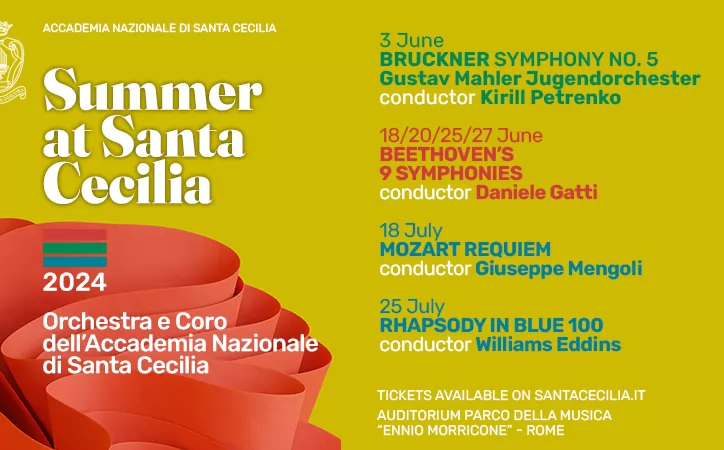An insider's guide to the Italian election.
On 9-10 April Italians go to the polls to elect a new parliament. The competition is between the centre-right coalition Casa delle Libert, led by incumbent prime minister Silvio Berlusconi, and the centre-left LUnione, headed by one-time prime minister and former president of the European Commission, Romano Prodi. This year, voters will elect their representatives according to a new proportional representation system (see box).
Parliament
Italy has a bicameral parliament made up of the chamber of deputies (Camera dei Deputati) and the senate of the republic (Senato della Repubblica). The two chambers are different in size but equal in importance. Bills must be passed by both houses without modifications before they can pass into law. Once both houses have ratified the bill, it is sent directly to the president of the republic for promulgation and it becomes law. Both chambers are elected at the same time every five years, but the chamber of deputies is elected by all Italians aged 18 or over while for the senate the minimum age of the electorate is 25.
The senate
The senate (also known as Palazzo Madama) is made up of 315 elected senators aged at least 40, plus a variable number (currently seven) of non-elected members comprising former presidents of the republic and people nominated by the president for outstanding service to Italy in the social, scientific, artistic or literary fields. In the coming parliament the elected senators will also include six representatives of Italians living overseas (see box below). The senate is led by a president who holds the second highest office of state and substitutes the president of the republic if the latter cannot perform his duties.
The chamber
of deputies
The chamber of deputies (also known as Montecitorio) has 630 members aged 25 or above including, as of this year, 12 representatives of Italians living overseas. The president of the chamber of deputies holds the third highest office of state and presides over joint sessions of parliament.
The government
The government consists of the prime minister (presidente del consiglio) and his ministers. The prime minister is not elected directly but appointed by the president of the republic, although he is usually the leader of the coalition that holds the majority in parliament. The prime minister in turn chooses his ministers, who are formally nominated by the president of the republic. The number of people holding government office can vary; the present Berlusconi government has 35 members including ministers and deputy ministers and 61 undersecretaries (the latter are not technically part of the cabinet but perform tasks assigned to them by their minister).
The government must have the confidence of parliament in order to govern; if it loses this confidence it has to resign. However, most government crises are the result of tensions within the ruling coalition, and they are resolved through a complicated process of mediation overseen by the president of the republic. Parliament can also pass a vote of no confidence against individual ministers, who must then resign. The prime minister and individual ministers can also be called to account at a British-style question time.
The president of the republic
The president of the republic is the head of state. He or she (although no woman has yet held the post) must be over the age of 50 and is elected by parliament in a special joint session for a seven-year renewable term. The president can return laws to parliament for revision if he thinks they do not conform with the constitution or if they do not have sufficient funding. He officially nominates and swears in the prime minister and government ministers (although he has no real authority over choosing them) and acts as mediator in political crises. He is the commander of the armed forces, presides over the superior council of magistrates and appoints one third of the judges on the constitutional court (the judiciary and parliament appoint the rest). The mandate of the current president, Carlo Azeglio Ciampi (who is in his first term of office), ends in May 2006.
For more information on parliament and the government see
www.senato.it, www.camera.it, www.palazzochigi.it,
www.quirinale.it, www.interno.it.An insider
Constitutional reform
On 18 November 2005 parliament gave its final approval for a constitutional reform that paves the way for a radical reorganisation of Italian institutions. The law, which places special emphasis on decentralising power to the regions, had the particular backing of Berlusconis centre-right Forza Italia party and the right-wing Lega Nord, which has long been a proponent of a federal state.
However, on the request of 15 regional councils and most centre-left members of parliament, the law will be put to a referendum early this summer before it can come into force. Should those in favour of the new law win the referendum, certain parts of the reform, mostly concerning the spheres of competence of the state and regions, would come into effect immediately. However, the bulk of the changes would be introduced at the start of the following parliament in 2011. Should those against the reform carry the day, the present constitution will remain unchanged.
So what could change? The reform provides for a smaller parliament with 518 elected deputies and 252 senators. The chamber of deputies would be elected according to the population in each constituency for a period of five years as at present. The federal senate, as it would be known, would be elected on a regional basis in order to give the 20 regions more weight in parliament than they have at present. The election of senators would coincide with elections for the regional governments. Since regional governments are elected at different times, the constitutional reform means that in theory, senators will be constantly changing.
There would also be changes to the legislative process so that bills would generally only need the approval of one chamber, with the other able to suggest modifications. There would also be a redistribution of legislative power between parliament and the regions, with the latter having exclusive competence for schooling, health services and regional policing; a younger (minimum age 40) president of the republic with fewer powers; a stronger prime minister with the prerogative to dissolve parliament and call elections; changes to the nomination of the constitutional court judges.
The full text of the constitutional reform can be consulted on line at http://gazzette.comune.jesi.an.it (click on 2005, November, n.269 del 18/11/2005).
ELECTION RESULTS 2001
Chamber of deputies
(630 seats)
Casa delle Libert 368
LUlivo and allied parties 250
Rifondazione Comunista 11
Others 1
Senate
(315 seats)
Casa delle Libert 176
LUlivo 125
Rifondazione Comunista 4
Others 10
Proportional representation explained
Between 1994 and 2001, Italy had a mixed voting system for both the Chamber of Deputies and the Senate (75 per cent of seats assigned on a first-past-the-post basis and 25 per cent by proportional representation). For the coming elections there will be a new proportional system as follows.
Chamber of Deputies
l 617 out of 630 seats are allocated via the new proportional representation (PR) system.
l Of the remaining 13 seats Italian citizens living abroad elect 12 deputies using the PR system and Val DAosta continues to elect a deputy in a single-member constituency.
l Electors vote for a party rather than an individual candidate, known as a closed party list system.
l Seats are allocated to:
coalitions receiving at least ten per cent of the vote and including at least one party that receives two per cent of the vote;
political parties that obtain at least four per cent of the vote running individually or within a coalition that receives less than ten per cent of the vote;
parties representing linguistic minorities that receive at least 20 per cent of the vote.
l Seats awarded to coalitions are allocated among constituent parties that have obtained at least two per cent of the vote.
l Under the nationwide majority prize rule, if the coalition that receives the most votes gets less than 55 per cent of seats (340 out of 617), its number of seats is increased to 340.
Senate
l The closed party list PR system is in place in 18 out of 20 regions.
l Seats are allocated to:
coalitions that receive at least 20 per cent of the vote and include at least one party that receives three per cent of the vote;
parties that receive at least eight per cent of the vote running individually or within a coalition that receives less than 20 per cent of the vote.
l Seats awarded to coalitions are allocated among constituent parties that have obtained at least three per cent of the vote.
l Under the regional majority prize rule, if the coalition that receives the most votes gets less than 55 per cent of seats in a region, its number of seats is increased to 55 per cent.
l Val DAosta continues to use majority voting, and Trentino Alto-Adige uses a system for the region established in 1991, voting for six single-member seats in the region split between the German-speaking and Italian-speaking provinces of Bolzano and Trento.
l Italian citizens living abroad elect six senators.
The new system means that small parties receiving less than two per cent of the overall vote will be unable to secure a seat in parliament, however successful they might be in an individual constituency.





















